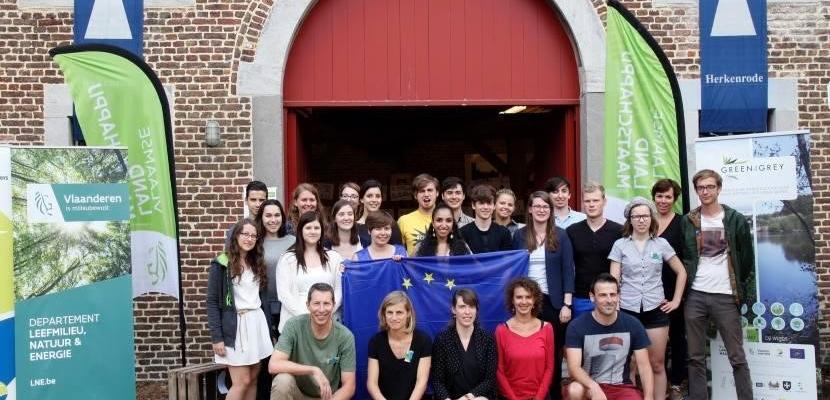Image

Design workshops for open spaces in peri-urban areas
Published on 11 October 2021

Belgium
This is the good practice's implementation level. It can be national, regional or local.
About this good practice
With the Life+ project Green4Grey, the Flemish Land Agency invests together with partners in the design and development of green and blue landscape elements in the Flemish Belt around Brussels and in 'De Wijers'.
Two series of design workshops were held with students and experts from various backgrounds: one for the area of Curange-les-bains in Hasselt in De Wijers. And one in the Northern periphery around Brussels.
Curange les Bains was in the mid-20th century an important recreational area. Today however it is a forgotten area without a clear identity, hidden behind residential zones.
The Northern periphery around Brussels is a largely green area now under pressure from urbanisation and large infrastructure works.
For both areas land development projects are being developed.
During both design workshops 20 students and just as many experts from different backgrounds were brought together to think about the regions and draw up new ideas.
The students were lodged in the area and through terrain visits and presentations from the experts got a chance to get to know the regions. Then, through group discussions and workshops they got a change to put forth their own ideas and designs. The results were published in a digital publication and presented to the public and local policy makers.
The concepts of ecosystem services and green infrastructure were presented and used as design principles throughout the workshops.
Two series of design workshops were held with students and experts from various backgrounds: one for the area of Curange-les-bains in Hasselt in De Wijers. And one in the Northern periphery around Brussels.
Curange les Bains was in the mid-20th century an important recreational area. Today however it is a forgotten area without a clear identity, hidden behind residential zones.
The Northern periphery around Brussels is a largely green area now under pressure from urbanisation and large infrastructure works.
For both areas land development projects are being developed.
During both design workshops 20 students and just as many experts from different backgrounds were brought together to think about the regions and draw up new ideas.
The students were lodged in the area and through terrain visits and presentations from the experts got a chance to get to know the regions. Then, through group discussions and workshops they got a change to put forth their own ideas and designs. The results were published in a digital publication and presented to the public and local policy makers.
The concepts of ecosystem services and green infrastructure were presented and used as design principles throughout the workshops.
Resources needed
A total amount of 13,210 € was required for the organisation of the two design workshops, co-financed with LIFE-funding, mainly for the lodging of the students, catering, meeting rooms.
Sufficient human resources are needed for the organisation of the events and reporting of the results.
Sufficient human resources are needed for the organisation of the events and reporting of the results.
Evidence of success
A questionnaire was conducted amongst the participants. A large majority (93%) of participants found this a useful or very useful formula to think about an intersectoral project.
Several of the ideas put forward during the workshops are being integrated in the land development plans that will be executed in the following years.
Several of the ideas put forward during the workshops are being integrated in the land development plans that will be executed in the following years.
Potential for learning or transfer
Looking at a region from different angles with people from many different backgrounds provided useful insights and creative ideas on how an area can be redeveloped.
Experts have tendency to look at a region from their own perspective. But mixing groups of people with very different backgrounds (including spatial planners, engineers, ecologists, architects…) forced people to think outside the box and come up with creative ways to addressing the problems in the regions and come to an integrated solution, taking into account the different functions of the areas (ecology, cultural heritage, agriculture, water retention…).
Using ecosystem services end blue and green infrastructure as design principles provided participants with a different way to look at the local situation.
Experts have tendency to look at a region from their own perspective. But mixing groups of people with very different backgrounds (including spatial planners, engineers, ecologists, architects…) forced people to think outside the box and come up with creative ways to addressing the problems in the regions and come to an integrated solution, taking into account the different functions of the areas (ecology, cultural heritage, agriculture, water retention…).
Using ecosystem services end blue and green infrastructure as design principles provided participants with a different way to look at the local situation.
Further information
Website
Good practice owner
You can contact the good practice owner below for more detailed information.
Organisation
Vlaamse Landmaatschapij (Flemish Land Agency)

Belgium
Prov. Vlaams-Brabant
Contact
Project Development Specialist